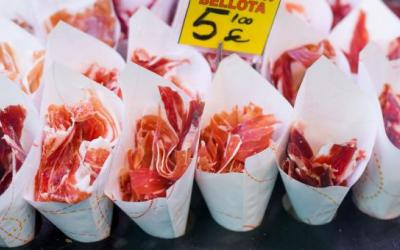Chicken meat prices are skyrocketing due to recovery in demand in the HoReCa sector

Since the beginning of 2021, prices in the global chicken MEAT market have risen sharply as a result of strong demand, rising cost of grain for feed and food, and slowing chicken slaughter rates in the EU, SOUTH KOREA and Japan. Higher shipping container costs further drive up EXPORT prices. According to forecasts, by the end of 2021, the global production and export of chicken meat will remain at the level of the previous year. Demand for chicken meat in CHINA is falling, while the country's pig herd is recovering and pork prices are falling. Saudi Arabia's ban on the import of chicken products from Brazil could lead to a reduction in exports from that country.
Key Trends and Findings: Global Chicken Market
Worldwide, chicken meat prices have been rising rapidly this year. Export prices for US chicken cuts and edible offal increased from $977 per tonne in January 2021 to $1,138 per tonne in June 2021, according to FAO. The price of broiler meat in the EU during the 29th week of 2021 was 204.5 euros per 100 kg, which is 10% more than the same period last year. The rise in prices is driven by increased demand from the HoReCa sector and retailers in Western countries, especially the US, as well as high poultry feed prices and slow production growth in the EU following the outbreak of avian influenza. The increase in rates for sea containers also contributes to the growth of export prices.
Based on data from the USDA, IndexBox estimates that by the end of 2021, global chicken meat production will remain at the same level as last year at 123 million tonnes. The fall in demand for chicken meat in China is the main factor holding back the increase in production volumes. China is intensively rebuilding its pig population after a widespread disease led to a significant reduction in their numbers. As a result, pork prices are falling and consumption is rising. The high cost of grain for feed and the impact of highly pathogenic avian influenza in the EU, South Korea and Japan are also hindering the growth of poultry production.
In 2021, global chicken meat exports will remain at the level of the previous year. The decline in meat supplies from the EU and Brazil will be offset by an increase in supplies from the US and China . The US is the world's second largest exporter of chicken meat, accounting for 24% of total exports. The United States is forecast to increase exports by +1% y/y to 3.5 million tons, while exports from China will increase by 10% y/y to 176 thousand tons.
Chicken meat exports from Brazil, the world's largest supplier, will fall by 3% year-on-year to 3.7 million tons as a result of Saudi Arabia's import ban, which will come into force in May 2021. The ban specifically applies to 11 poultry processing plants in Brazil. Saudi Arabia is one of the largest importers of Brazilian chicken meat, but this year the country will actively develop domestic production and offset the fall in imports from Brazil with increased supplies from China, Cuba and Angola.
Chicken meat production by country
In 2020, the volume of chicken meat production worldwide increased by +4% to 123 million tons. The volume of chicken meat production, estimated at export prices, reached 192.4 billion US dollars in 2020.
The countries with the highest chicken production volumes in 2020 are the US (20 million tons), China (15 million tons) and Brazil (14 million tons), which account for 40% of global production. These countries are followed by RUSSIA , India, Indonesia, Mexico, Japan, Iran, Argentina, Poland, Turkey and Peru, which collectively account for another 25%.
Chicken meat exports by country
In 2020, global chicken meat exports rose to 15 million tonnes, up 3.9% year-on-year. In value terms, chicken meat exports fell to $21.6 billion (IndexBox estimates) in 2020.
Brazil (3.9 million tons) and the United States (3.5 million tons) account for approximately 49% of total chicken meat exports in 2020. They are followed by the Netherlands (1.4 million tons) and Poland (1.2 million tons), together accounting for another 17% of total exports. The following exporters are Turkey (516 thousand tons), Belgium (439 thousand tons), Ukraine (430 thousand tons), Great Britain (427 thousand tons), Thailand (341 thousand tons), Germany (295 thousand tons) and France (228 thousand tons) - together they occupy about 18% of the total export volume.
In 2020, the most notable growth rates in the volume of deliveries among the main exporting countries were achieved in Turkey (+68.0% per year), while the exports of other world leaders showed more moderate growth rates.
In value terms, Brazil ($5.5 billion), the United States ($3.4 billion) and the Netherlands ($2.5 billion) remain the largest chicken meat supplying countries, which together account for 53% of the world's export. These countries are followed by Poland, Thailand, Belgium, Ukraine, Germany, Turkey, France and the UK, together holding another 28%.
The average export price of chicken meat was $1,451 per ton in 2020, down 8.3% from the previous year. In 2020, the United States showed the most noticeable price growth rates, while other leading world countries saw a decrease in export prices.
Read together with it:
- An HSE expert reported on the "evolution of inequality" in access to healthcare.An HSE researcher analyzed Russians' access to healthcare over a ten-year period. In 2021, the influence of financial factors became noticeable for the first time: low income reduces the likelihood of visiting a DOCTOR.Over the ten years from 2011 to 2021, the number of Russians requiring medical care but not receiving it remained virtually unchanged, according to a study by Lyudmila Zasimova, hea...
- The IEA sees a risk of a decline in oil production in Russia due to sanctions.The IEA sees a risk of reduced oil production in RUSSIA due to US sanctions , but maintains its production forecast. According to the IEA, Russian oil exports will remain unchanged.There is a "significant downside risk" to Russia's oil production forecast due to US sanctions, the International Energy Agency (IEA) said in a report.BLOOMBERG . The agency's experts believe that the latest US sanction...
- "Коллективы АПК способны решать любые задачи даже в непростых условиях". Назаров о заслугах сельхозпроизводителейЮрий Назаров 13 ноября, Минск. Обеспечение продовольственной безопасности страны - большое достижение трудовых коллективов аграриев, отметил управляющий делами Президента Республики Беларусь Юрий Назаров на торжественной церемонии награждения государственными и иными наградами работников АПК Управления делами Президента Республики Беларусь, передает корреспондент БЕЛТА. Торжественная церемония наг...
- Russian agriculture: self-sufficiency continues to growThe industry has a track record of implementing new technologies and increasing productivity. RUSSIA is already confidently self-sufficient in grain, MEAT, fish, vegetable oil, and SUGAR. Grain and vegetable production is also forecast to be higher this year, despite unfavorable weather conditions in some regions. The Ministry expects historic highs for some crops and continues to support agricult...
- Sustainable growth of the food and processing industries in BashkortostanIlshat Fazrakhmanov, Deputy Prime Minister andThe regional Minister of Agriculture noted that the development of these industries provides the population with essential food products and contributes to increased exports. Since 2020, agricultural exports from the region have doubled. Since the beginning of 2......
- Китайский рынок мяса: консолидация, меры безопасности и проблема субпродуктов«Мы завершаем выставку CIIE в Шанхае, в целом хорошую выставку, где мы видим консолидированные цены, как это было с начала года, но в то же время рынок ожидает решения по защитной мере, определения которой должны быть даны в конце ноября», — сказал он Valor Agregado Agro. Лидер пояснил, что глобальная ситуация характеризуется «колебаниями на международном рынке, вызванными интенсивной геополитичес...
- В Тульской области уничтожили 24 кг санкционных сыров и мясных продуктов из ЕвропыВо время совместной проверки с транспортной прокуратурой из оборота было изъято 24,45 кг сыров и мясных изделий, произведенных в таких странах, как Дания, Испания, Норвегия, Италия, Ирландия и Франция. Ввоз данной продукции на территорию России запрещен в соответствии с указом Президента, касающимся специальных экономических мер. Изъятая продукция была ликвидирована путем измельчения и денатурации...



























































